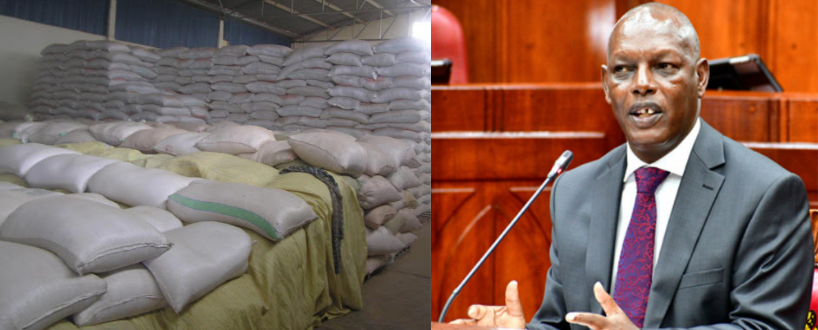Maize production in Kenya is projected to increase to 70 million sacks this year, thanks to effective government strategies aimed at boosting the agricultural sector.
Key strategies include subsidized fertilizers and favorable rainfall, with the Rift Valley and Western Kenya emerging as major food production hubs.
Dr. Paul Kipronoh Ronoh, Secretary in the Ministry of Agriculture, announced that the government has purchased 2.5 million bags of fertilizer for the subsidy program in the upcoming season.
“Maize production rose to 67 million sacks last season, up from 44 million sacks the previous year. We estimate production will exceed 70 million sacks this year,” Dr. Ronoh stated.
The government’s initiatives have led to a 23 million sack increase in maize production over two years, with expectations for an additional three million sack increase this harvest season.
Over the past two years, 8.5 million bags of subsidized fertilizer were sold at Sh2,500 per 50 kg bag, a significant reduction from Sh7,000 three years ago.
County governments are now participating in the program, and a new policy is being developed to store fertilizer closer to agricultural fields for easier access by farmers.
The Rift Valley and Western Kenya remain crucial for maize production, although Kenya still faces an annual deficit of about 356,000 tons of maize, necessitating imports from neighboring countries.
Major maize-producing counties include Trans Nzoia, Uasin Gishu, Narok, Bungoma, Kakamega, Kericho, Bomet, Nandi, and Nakuru, which together contribute 50% of the national maize output.
Production has been challenged by the Maize Lethal Necrosis Disease (MLND), which has affected Bomet, Narok, and Kericho counties.
Despite a decrease in maize production in neighboring Tanzania and Uganda, Kenya is expected to see a 20% increase in maize production this year, with land under maize expanding to 2.4 million hectares in 2023 and projected to reach 10.8 million hectares in five years.
Dr. Ronoh highlighted that the government will ensure sustainable registration of farmers through digital systems for the fertilizer subsidy program, aiming to support all farmers in making agriculture a key sector in the country.
Currently, 3,458,152 farmers are registered electronically, with this number expected to grow.
Dr. Douglas Kangi noted that there are currently only 670,000 bags of maize storage at the National Cereals and Produce Board (NCPB), insufficient for the country’s needs.
“Kenya requires 7.1 million sacks of maize per month, while we have 35.2 million sacks in total,” Dr. Kangi added.

